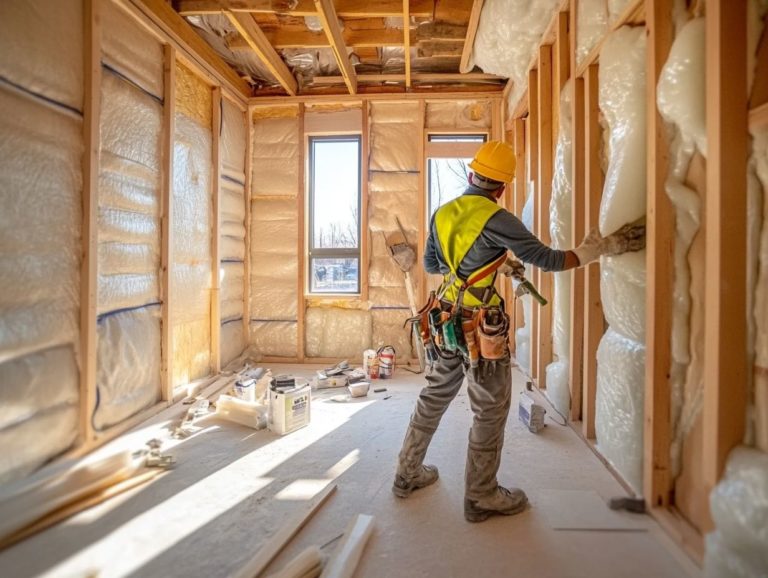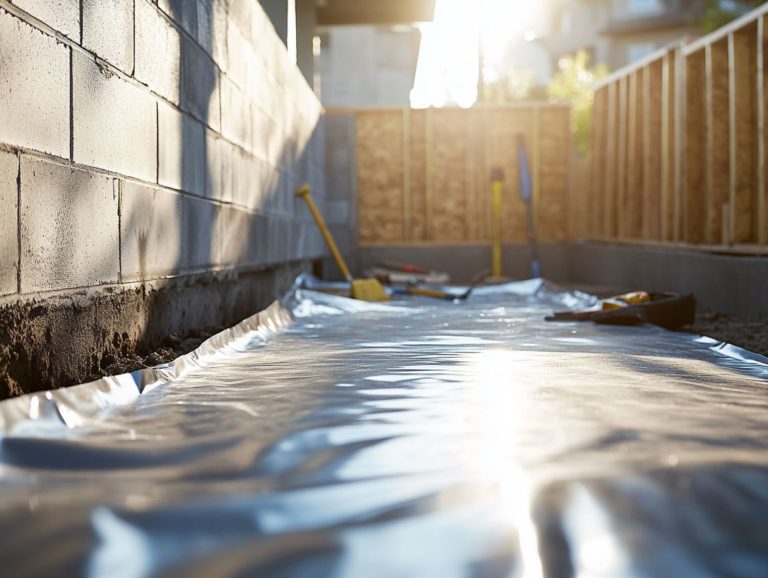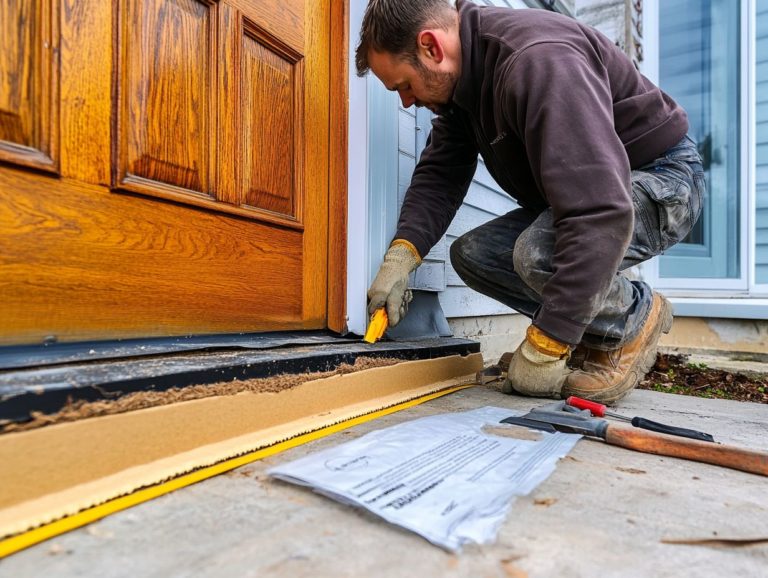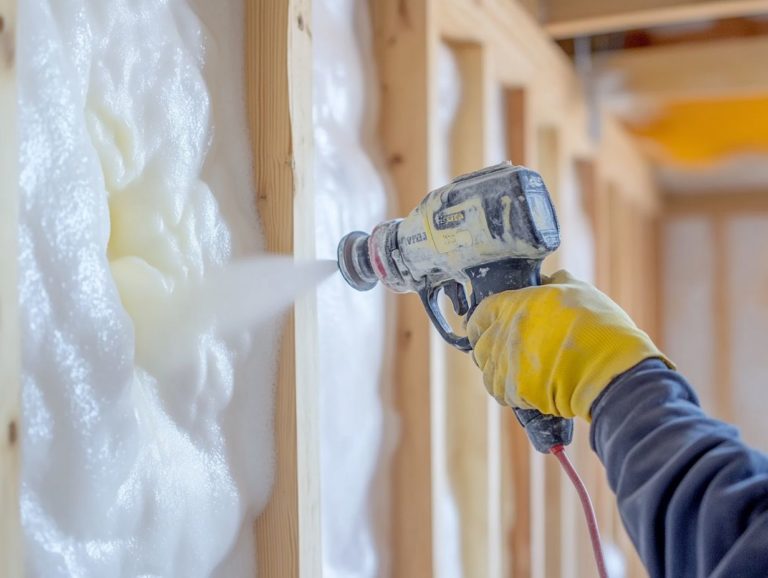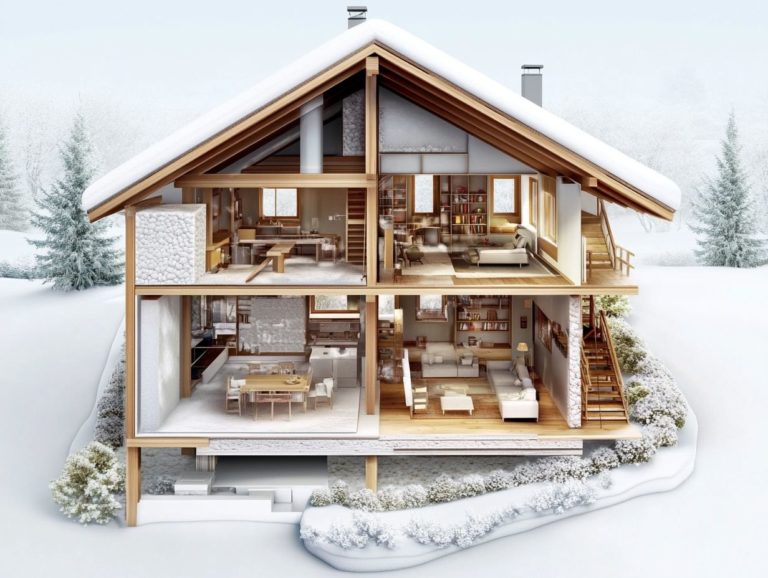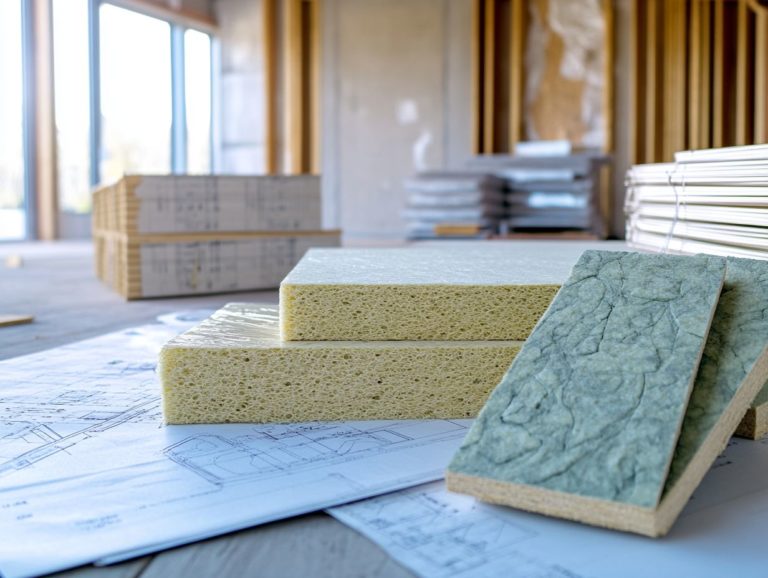5 Signs Your Home Needs More Insulation
Are you dealing with soaring energy bills or drafty areas in your home? Insufficient insulation might be the hidden villain in your story.
Here are five signs that suggest your home needs more insulation, from uneven temperatures in different rooms to ice dams on your roof.
This article will help you assess your insulation needs, explore various types, and uncover the benefits of adding more insulation.
Don t wait let s dive in and save you money!
Contents
Key Takeaways:
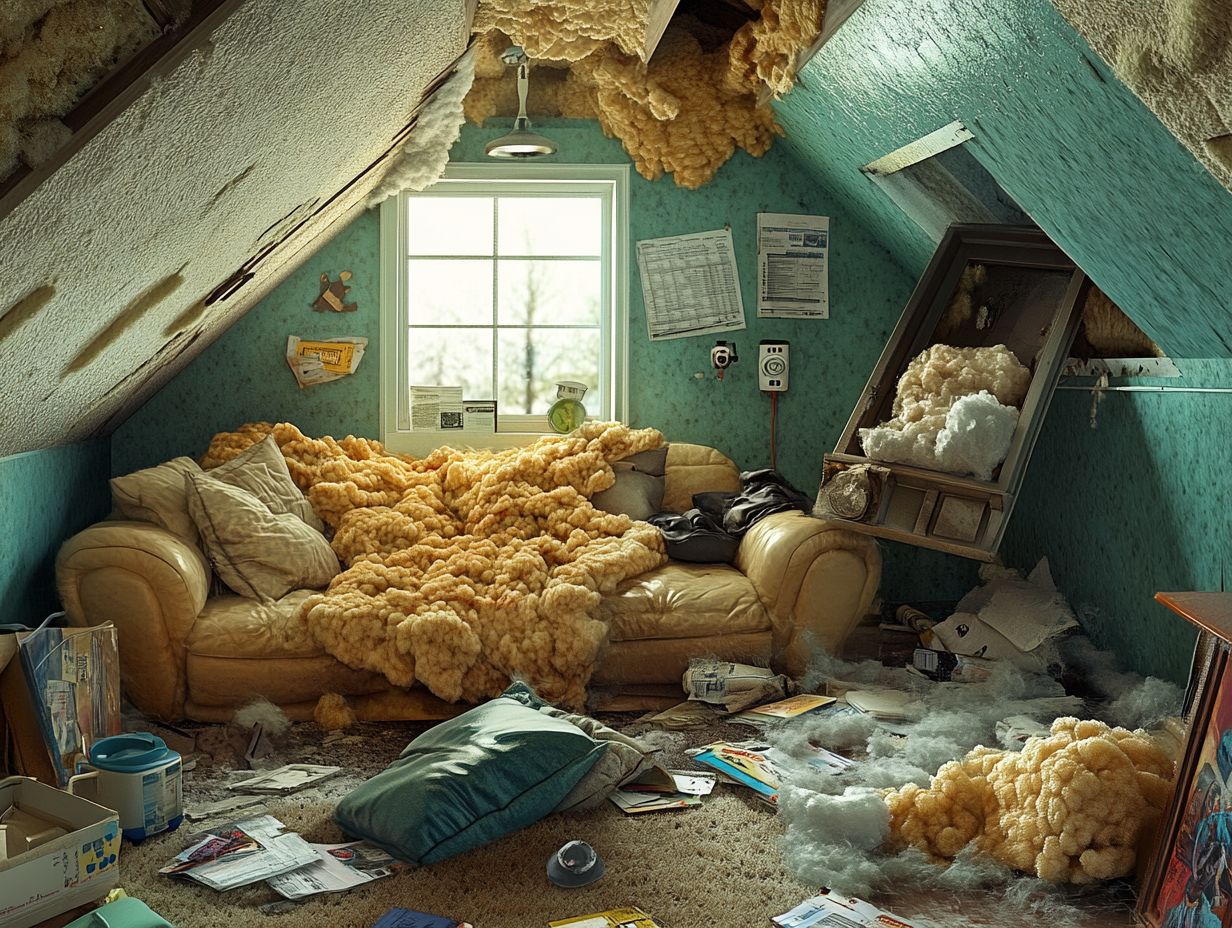
High energy bills could indicate insufficient insulation. Uneven temperatures in different rooms suggest a need for better insulation to maintain comfort.
1. High Energy Bills
High energy bills are a common concern for homeowners. In Florida, the climate greatly affects energy use.
Constant heating and cooling demand makes it essential to ensure your home is well-insulated. This leads to savings on your monthly bills.
If insulation is lacking, your HVAC system works harder, resulting in higher costs and uncomfortable temperature swings.
Inadequate insulation can allow conditioned air to escape, inviting unwanted outside air in. Regularly check areas like attics, basements, and walls for gaps, as improving insulation can also enhance your home’s look—explore 5 ways insulation can enhance home aesthetics.
Hiring professionals for an energy audit is smart. They can find weaknesses and recommend solutions to keep your home comfortable and utility bills low.
2. Uneven Temperatures in Different Rooms
Uneven temperatures in different rooms can be frustrating. This often happens due to inadequate insulation or air leaks that disrupt temperature control.
Cold spots can make some areas uninviting, especially during chilly months. Various insulation types can help balance temperatures.
For instance, fiberglass insulation is affordable and excellent at preventing heat loss. Alternatively, stone wool is great for thermal performance and soundproofing.
Upgrading insulation maximizes energy efficiency and keeps your home comfortably warm.
3. Drafts or Air Leaks
Drafts and air leaks can disrupt your home’s comfort. They let cold air in and warm air escape, leading to higher energy costs.
These drafts often come from walls, floors, and attic insulation. Look for gaps where materials meet or poorly insulated floors that allow drafts.
Attics may lack sufficient insulation, allowing heat to escape. Regularly check your insulation needs.
Consider professional help for an energy audit to identify and seal air leaks. This ensures a comfortable living space and reduced energy expenses.
4. Ice Dams on the Roof
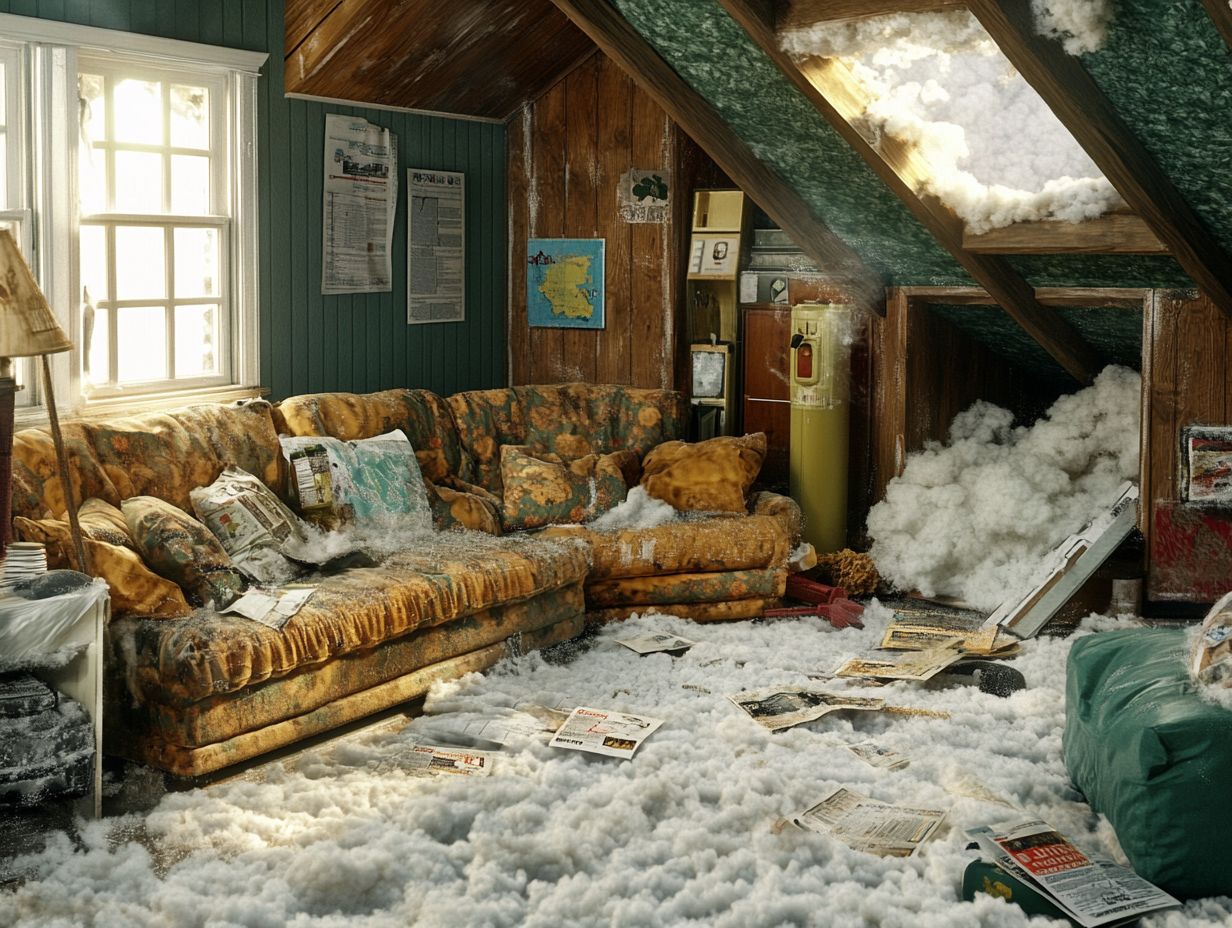
Ice dams on your roof can cause serious problems. They often lead to significant damage from inadequate attic insulation and managing dampness.
When warm air escapes from a poorly insulated attic, it rises to warm the roof surface. This causes any accumulated snow to melt. The melted snow then trickles down, refreezing at the eaves where temperatures are cooler and forming a solid dam of ice. Such conditions can trap water behind the ice, potentially seeping into your home s structure and leading to leaks or even mold growth.
Ensuring your attic is properly insulated is vital for preventing moisture issues that could threaten your entire home s integrity.
5. Mold or Mildew Growth
Mold and mildew growth should be a top concern for homeowners. It often stems from excess moisture in poorly insulated areas like attics and walls.
Damp spots can become breeding grounds for harmful spores, posing health risks and leading to costly repairs. When your insulation falls short, cold air sneaks in, causing condensation to form on surfaces.
Materials like fiberglass or spray foam can act as effective barriers. To tackle moisture accumulation, consider implementing vapor barriers, which help prevent moisture from passing through walls and ceilings, ensuring proper ventilation, and regularly inspecting your insulation.
Maintaining balanced humidity protects your home s structure and creates a healthier living space for your family!
How Does Insufficient Insulation Affect Your Home?
Insufficient insulation can significantly compromise your home’s energy efficiency. To avoid this, it’s important to recognize indicators of poor insulation, as this forces you to lean heavily on your heating and cooling systems, driving up monthly energy bills.
You might notice this inadequacy through drafts, uneven temperatures, and a strained HVAC system. These issues contribute to uncomfortable living conditions and increasing operational costs.
The absence of proper insulation encourages mold growth, especially in humid areas. As temperatures within your home fluctuate, moisture can accumulate, creating health risks and potentially damaging your property.
By assessing your insulation needs, you can uncover opportunities to enhance energy efficiency. This ensures even temperature distribution throughout your space.
Taking this proactive approach cultivates a more comfortable living environment and helps you reduce long-term energy costs. Well-maintained insulation systems operate more effectively, leading to a healthier and more sustainable home.
What are the Different Types of Insulation?
You have various insulation materials at your disposal, including fiberglass, cellulose, spray foam, and mineral wool. Each option comes with its own set of benefits and applications, tailored to meet diverse home insulation needs.
As a homeowner in Florida, consider how each material interacts with the state’s humid subtropical climate. For example, fiberglass insulation offers exceptional thermal performance and resists moisture, making it a favored choice for attics and walls.
Cellulose, crafted from recycled paper, is eco-friendly and provides solid soundproofing. You might need a vapor barrier to stave off any moisture issues.
Spray foam insulation creates an airtight seal that boosts energy efficiency but comes with a higher upfront cost. Lastly, mineral wool is fire-resistant and excels at sound dampening, making it perfect for multifamily dwellings.
By understanding the advantages and disadvantages of these materials, you can make informed decisions that enhance energy efficiency and comfort throughout the year.
Don’t wait! Evaluate your insulation today to protect your home and save on energy costs!
How Can You Tell If Your Home Has Adequate Insulation?
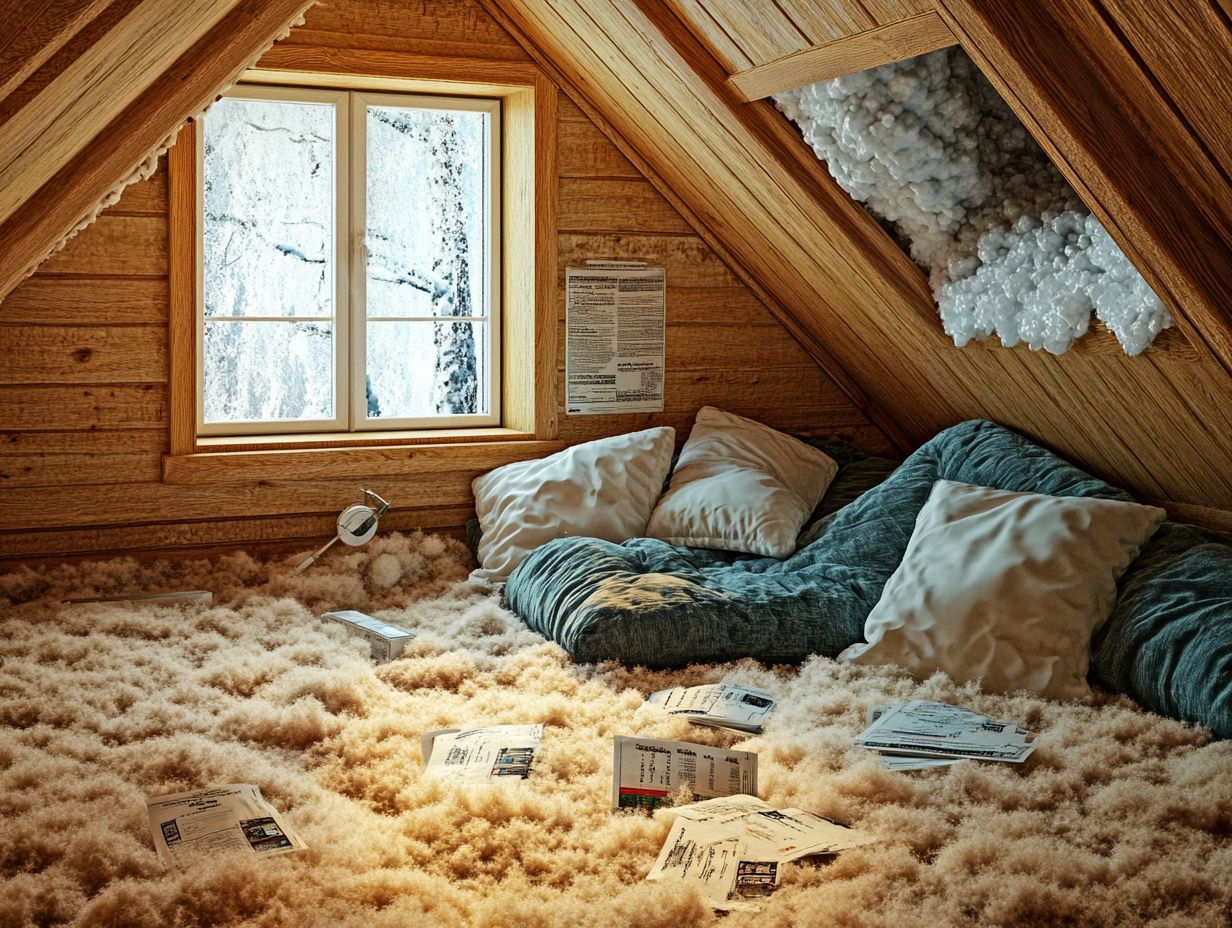
To determine if your home has enough insulation, start with an energy audit. This will help you find air leaks and drafts, which are signs your weatherproofing needs repair, indicating insulation problems.
Examine visible areas such as attics, basements, and walls for gaps or thin insulation. These issues significantly contribute to energy loss. To tackle this, consider exploring 5 ways to improve home insulation. You might notice signs of inadequate insulation, like temperature fluctuations between rooms or an unwelcome spike in your energy bills.
For a thorough energy audit, consider using tools like thermal cameras or moisture meters to pinpoint where heat is escaping. If the DIY route feels daunting, enlisting a professional assessor can be a wise choice.
These experts provide a complete evaluation and can recommend tailored solutions to enhance your home s energy efficiency and comfort.
What Are the Benefits of Adding More Insulation?
Adding more insulation to your home offers a wealth of benefits. It enhances energy efficiency, lowers monthly energy bills, and improves temperature control in your living spaces.
By creating a layer that keeps heat in during winter and out during summer, you significantly boost your indoor comfort.
Imagine a cozier home and lower bills! You’ll love the savings and comfort that come from proper insulation.
A well-insulated home results in fewer greenhouse gas emissions, promoting a healthier planet while ensuring a stable indoor climate free from drafts or extreme temperature swings.
Steps to Insulate Your Home Effectively!
Adding insulation to your home involves several essential steps. Start by selecting the right insulation materials and identifying areas needing attention, like attics and walls. Consider hiring professionals for optimal results.
Assess which specific sections of your home require insulation, as this can significantly impact energy efficiency. Choose insulation types that suit Florida s humid and warm climate, favoring materials that resist moisture and mold.
The installation process can vary depending on location and project complexity. For example, attics may require special techniques to ensure thorough coverage without sacrificing ventilation.
Given the wide array of materials available and the intricacies of local building codes, hiring professionals can make a world of difference. They ll ensure the job is done correctly, safely, and in alignment with energy efficiency standards.
How Can You Maintain Proper Insulation in Your Home?
Maintaining proper insulation is essential for ongoing energy efficiency and preventing moisture issues that lead to mold growth and damage.
Regular maintenance checks are crucial. Frequently inspect insulation materials for signs of wear or degradation. Promptly address any damaged areas to prevent further complications.
Proper ventilation in attics is equally vital. It helps regulate temperatures and allows moisture to escape, reducing the risk of condensation and maintaining insulation efficiency.
Keep a close eye on your HVAC system to ensure optimal performance, making sure that heating and cooling efforts aren t hindered by inadequate insulation.
In Florida’s humid climate, keeping insulation in good shape is crucial. It helps prevent mold and keeps your home comfortable.
Frequently Asked Questions

What are the signs that my home needs more insulation?
- High energy bills: If your energy bills keep rising, your home may be losing heat or air conditioning due to insufficient insulation.
- Uneven temperatures: Some rooms may feel significantly colder or warmer, indicating that insulation isn’t effectively regulating your home’s temperature.
- Drafts or air leaks: If you feel drafts or see air leaks around windows, doors, or outlets, your insulation might not be effective.
- Ice dams: Large icicles on your roof could mean your attic is poorly insulated, allowing heat to escape.
- Pest infestations: Inadequate insulation can create gaps, making it easier for pests to invade your home.
How can more insulation help my home?
Adding insulation brings many benefits:
- Lower energy bills due to improved efficiency.
- Increased comfort by maintaining consistent temperatures and eliminating drafts.
- Reduced noise pollution from the outside.
- Better air quality by preventing leaks and keeping out pollutants.
- A longer lifespan for your heating and cooling systems since they won’t have to work as hard.
What types of insulation are available for my home?
- Fiberglass insulation: Made from glass fibers, commonly used in attics and walls.
- Cellulose insulation: Made from recycled paper and also used in attics and walls.
- Spray foam insulation: This polyurethane foam expands to fill gaps and is used in various areas including attics and foundations.
- Reflective insulation: Made from aluminum foil and reflects heat, typically used in attics.
Can I install insulation myself?
While DIY insulation is possible, hiring a professional is recommended for the best results. They have the expertise to evaluate your needs and install insulation correctly.
How much does it cost to add more insulation to my home?
The cost varies based on insulation type and home size. Generally, you might spend between $1,500 and $2,500 for professional installation. Remember, this cost can be offset by future energy savings and increased comfort!

